CSIG-VIS 2019 Summit Forum (Chongqing) – Summit Forum on Big Data Visualization and Smart City – was being held at Conference Room 504, Main Teaching Building, Chongqing University on April 12, 2019. More than 100 persons including scholars and experts from colleges and universities, scientific research institutions, enterprises and public institutions in China and current students of related specialties have attended this Summit Forum. The Summit Forum is sponsored by Special Committee on Visualization and Visibility Analysis of China Society of Image and Graphics (CSIG-VIS) and organized by the Key Lab of “Trusted Service Computation for Information Physics Society” of the Ministry of Education and the School of Big Data and Software Engineering of Chongqing University. Associate Professor Hu Haibo of the School of Big Data and Software Engineering served as executive chairman of the Summit Forum.
The theme of the Summit Forum is “big data visualization and smart city”. Professor Chen Wei from Zhejiang University, Professor Wang Yunhai from Shandong University, Mr. Feng Yicun, chairman of HYDATA, Professor Li Xiang from Information Engineering University, Mr. He Ansong, deputy general manager of the Smart Platform Business Department of Shenzhen Coship Electronics Co., Ltd., and Associate Professor Pu Jiansu from University of Electronic Science and Technology of China, chairman of the Organizing Committee of ChinaVis2019, have all attended the event and delivered special reports or keynote speeches upon invitation.
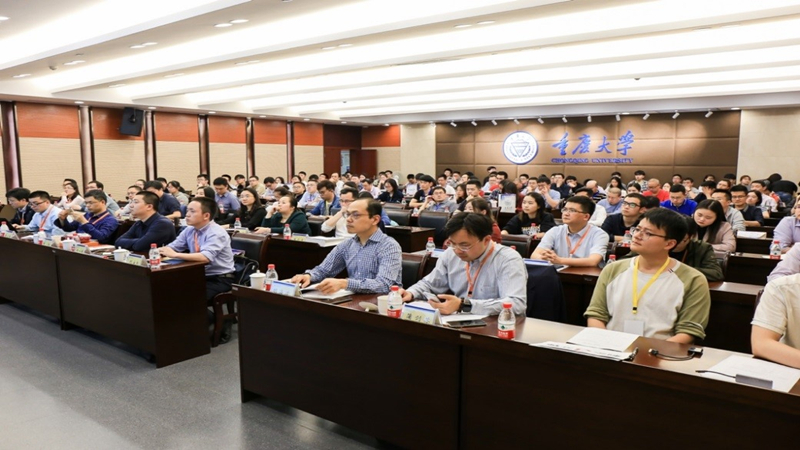
CSIG-VIS 2019 Summit Forum (Chongqing) – Summit Forum on Big Data Visualization and Smart City
Professor Zhang Xiaohong, secretary general of Strategic Alliance of Robot and Intelligent Manufacturing Technology Innovation in Chongqing and deputy dean of the School of Big Data and Software Engineering of Chongqing University, delivered an opening speech at the event. In his speech, Professor Zhang extended warm welcome to the attendants, and gave an idea of two new programs of the School: artificial intelligence and data science and big data technology. He pointed out that big data is like a mysterious “black hole”, and visualization technology, in such an overall background, could be regarded as a “navigator” for understanding and manipulating data; visibility analysis is also an important research area as part of the big data analysis. In particular, through integration of cutting-edge technologies like the Internet of Things, big data and artificial intelligence, a new industrial chain would hopefully be created for construction of smart cities.
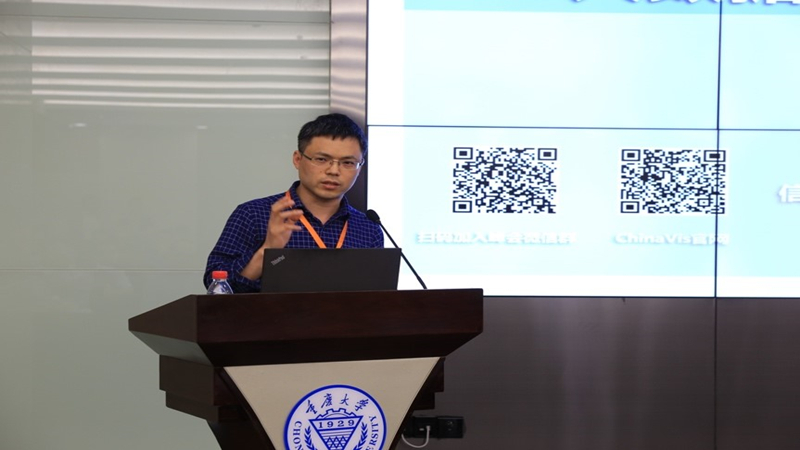
Professor Zhang Xiaohong from Chongqing University is delivering a speech.
Afterwards, Associate Professor Pu Jiansu from University of Electronic Science and Technology of China, chairman of the Organizing Committee of ChinaVis2019, gave a brief introduction to the event. He stated that the Summit Forum was held to serve the social needs and build an exchange platform to enhance the influence of the Special Committee. He encouraged more researchers of the colleges and universities and enterprises to get involved in research of the visualization and visibility analysis area and make joint efforts to promote development of this area.

Associate Professor Pu Jiansu from the University of Electronic Science and Technology of China is giving an introduction to the event.
Professor Chen Wei from Zhejiang University delivered the first invited lecture of the Summit Forum. The lecture was titled “visualized query and analysis of ternary spatial data”. Professor Chen said that with rapid expansion of information technology, the data acquisition perception computing capacity had outdistanced the data processing capacity. Efficient perception of ternary spatial big data has become an important research area of nowadays. Considering challenges such as complexity of data, limitation of human cognition and temporal and spatial separation of application, visibility expression approaches with high expressiveness are needed to design task-oriented exploration-type visibility analysis paradigm and realize complicated temporal and spatial scenario data management, visualization and services. Mutual supplementation could be realized by utilizing the human brain intelligence and machine intelligence to serve more practical application scenarios. Currently main research areas include: visual expression of temporal and spatial data, correlated visibility analysis of complicated temporal and spatial information and visualized services for complicated cross-space and time scenarios.
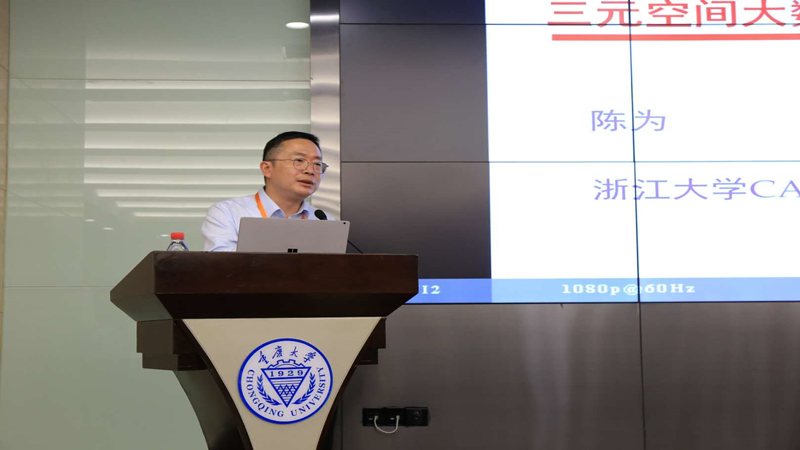
Professor Chen Wei from Zhejiang University is delivering a report.
Professor Wang Yunhai from Shandong University stated in his speech that there had already been some visualization methods adopted for representation of pictures. However, limitation of traditional methods has been gradually revealed with progress of human cognition and aesthetic demands. They have redesigned the traditional model by adding direction information to the existing distance information, so as to meet the analysis needs of users and better meet the aesthetic principle. As for the complete change of data structure after data input, such deformation could be controlled by maintaining direction of the sides in the process of zooming. Professor Wang has also shared their research work.
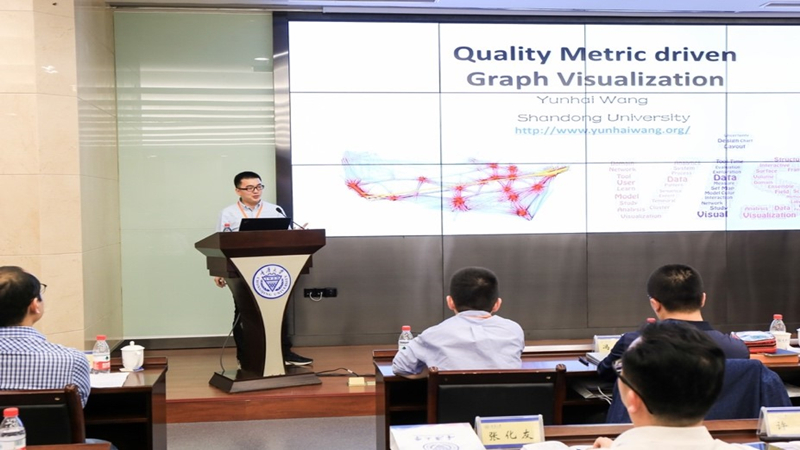
Professor Wang Yunhai from Shandong University is delivering a report.
Mr. Feng Yicun, chairman and founder of HYDATA, delivered a speech titled “visual ability”. HYDATA, as an innovation-oriented company, has made certain achievements in enterprise scale and volume. It has been focusing on visualization and visibility analysis and its ultimate goal is to provide values for customers. The Company always attaches importance to the big data visibility analysis technology: dream builder of AI application scenarios. With the use of AI technology, users will be allowed to “really see”. Mr. Feng pointed out that scenarios serve as the foundation of all technologies and capacity is the termination of all scenarios, while visualization and visibility analysis are the ultimate expression of capacity, which is irreplaceable.
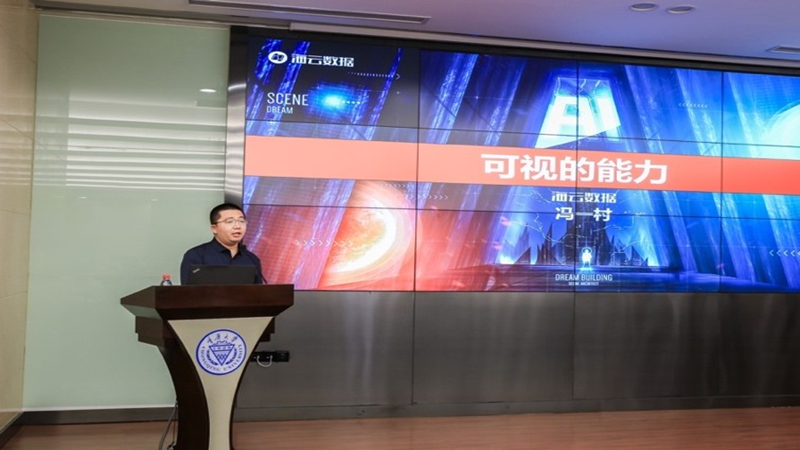
Mr. Feng Yicun, chairman of HYDAT, is delivering a report.
Associate Professor Li Xiang gave an introduction to visualization of geographic information from an interesting perspective. He started with the wall paintings of primitive men and went all the way through to the Medieval. People used different ways to draw the map. In the Great Navigation times and modern times, accuracy became the most highlighted when it comes to drawing of scientific maps. In the maps, important information and areas are highlighted, and unimportant ones are omitted and reduced, and vertical information is simplified, all to achieve better expression. Through review of the geographic information visualization and analysis of the development rules, ideas on how map science could better adapt to the era of internet were proposed.

Associate Professor Li Xiang from the Information Engineering University is delivering a report.
Mr. He Ansong, deputy general manager of the Smart Platform Business Department of Shenzhen Coship Electronics Co., Ltd., delivered a report titled “application of smart city IoT platform 3D visualization and related challenges”. The national strategies have brought about great opportunities for construction of the Internet of Things. However, we are also facing enormous challenges: fragmentation, data silos, poor actual effects, mechanism constraints, IT system orientation, long cycle, poor public response and lack of security. Visualization is of great significance for Internet of Things platform, and helps with expression of its value, and solves problems such as communication, unity and efficiency. However, the current 3D visualization development still needs improvement in the following aspects: lagging behind production mode, poor coordination linkage, poor real-time expansibility and low daily utilization rate. From data visualization, to business availability and then to twinborn data, the level of visualization of Internet of Things platform keeps growing and more stringent requirements are being placed.
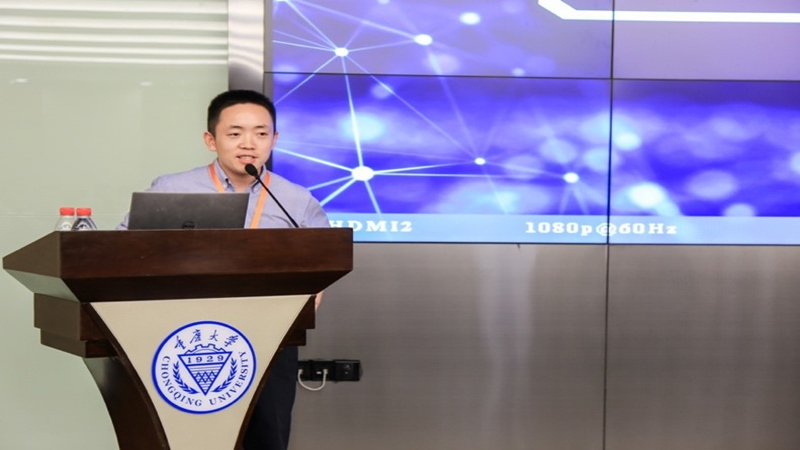
Mr. He Ansong, deputy general manager of the Smart Platform Business Department of Shenzhen Coship Electronics Co., Ltd., is delivering a report.
Associate Professor Pu Jiansu from University of Electronic Science and Technology of China, chairman of the Organizing Committee of ChinaVis2019, gave a detailed introduction to the 6th China Visualizations and Visibility Analysis Conference at the Summit Forum. Since 2014, the Conference has been successively held in Beijing, Tianjin, Changsha, Qingdao and Shanghai. In 2019, it will be held in Chengdu. The Conference comprises a number of sessions, including the invited lecture session, symposium, conference paper, doctoral student forum, data visibility analysis challenge, and art exhibition and competition. The purpose is to encourage academic exchange between scholars from different areas of science and arts. Experts, scholars and students engaged in visualization and visibility analysis and related research areas and experts and professional technicians of the industrial community are also welcome to submit papers and attend the Conference.
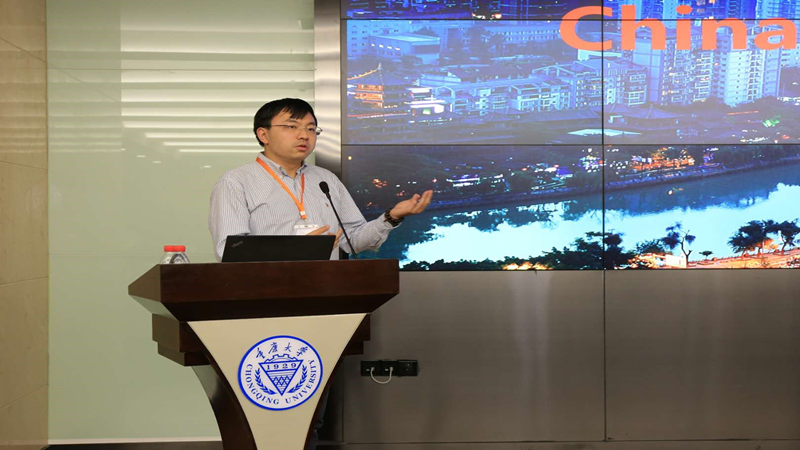
Associate Pu Jiansu from the University of Electronic Science and Technology of China is delivering a report.
After the report session, Associate Professor Hu Haibo from the School of Big Data and Software Engineering of Chongqing University presented each of the presenters with an acknowledgement certificate on behalf of the Special Committee and the organizers of the Summit Forum, and extended his sincere appreciation.
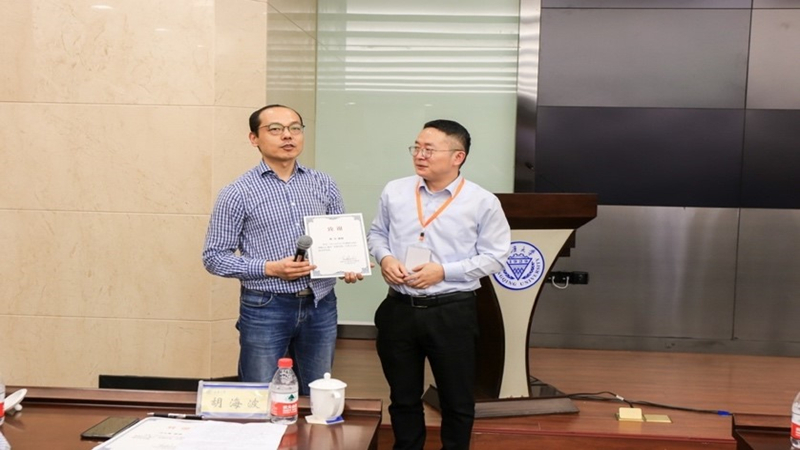
Associate Professor Hu Haibo is presenting Professor Chen Wei with an acknowledgement certificate.
The atmosphere of the exchange session had been inspiring, with sparks of thought inspired. In the last part, Hu Haibo delivered a concluding and summarizing speech of this event, and extended his gratitude to the invited guests and attendants. Then, CSIG-VIS 2019 Summit Forum (Chongqing) – Summit Forum on Big Data Visualization and Smart City – was brought to a successful end.
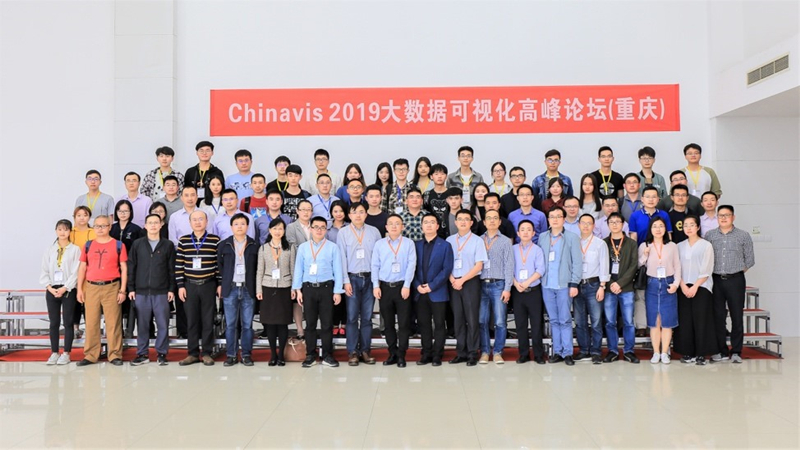
Group photo of attendants
